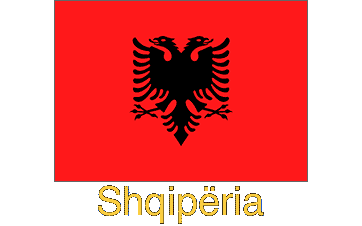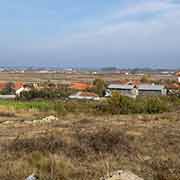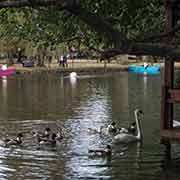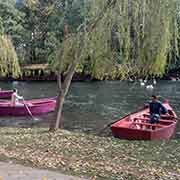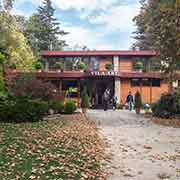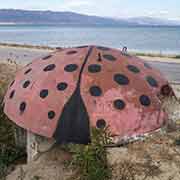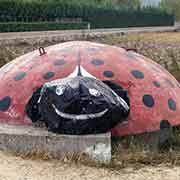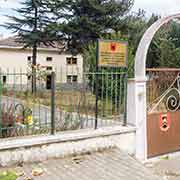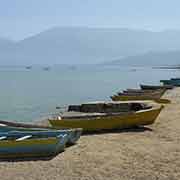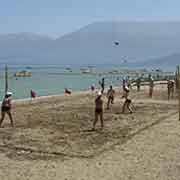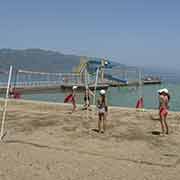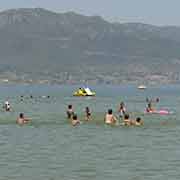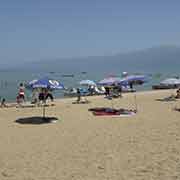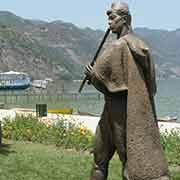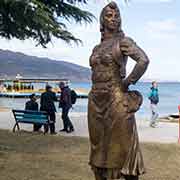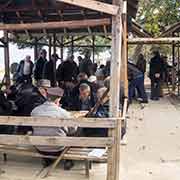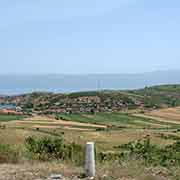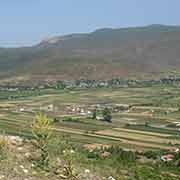Photos from Albania
Pogradec, the city on Lake Ohrid
Pogradeci (or Pogradec in a sentence with a preposition) is a city of around 15,000 inhabitants. It is in the southeast of Albania, on the southern shore of Lake Ohrid, close to the border with North Macedonia. Hills surround it on the south and western side. It is known for its canned fruits and a centre of vegetable and dairy production; there is also some light industry. It has excellent prospects for tourism as it has a magnificent beach and beautiful scenery around the lake and surrounding hills.
you may then send it as a postcard if you wish.
Liqeni i Ohrid, or Lake Ohrid, one of Europe’s deepest and, according to most experts, the oldest lake in Europe, lies on the mountainous border between southwestern Macedonia and eastern Albania. It has a unique aquatic ecosystem with more than 200 endemic species and is therefore of worldwide importance: in 1979, UNESCO declared it a World Heritage site. Lake Ohrid is the deepest lake of the Balkans, with a maximum depth of 288 metres and a mean depth of 155 metres. It is 30.4 kilometres long and 14.8 kilometres wide at its greatest extent, with a shoreline length of 56 kilometres in North Macedonia and 31.5 kilometres in Albania. Its total area is 358 km².
Overlooking Pogradec on top of the hill is Encheleana, an ancient fortress of Illyrian origin. The fort was rebuilt in the Middle Ages during the time of the Bulgarian invasion. They named the place of the modern city: Po (or Pod) Gradec (“Under the Castle”), a name it has retained until the present day. In the 18th Century, during Ottoman times, the town was an administrative centre. It suffered extensive damage during the First World War, the Italian-Greek War of 1940-1941 and the National Liberation wars from 1941-1944. There are, however, still some old buildings, now preserved as cultural monuments.


